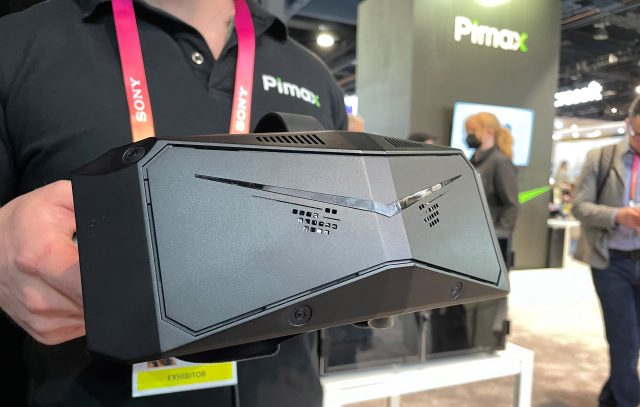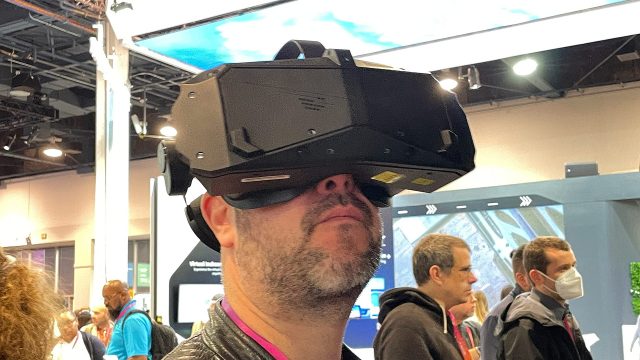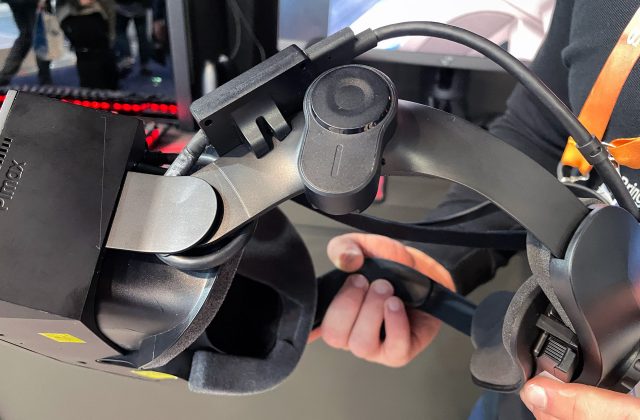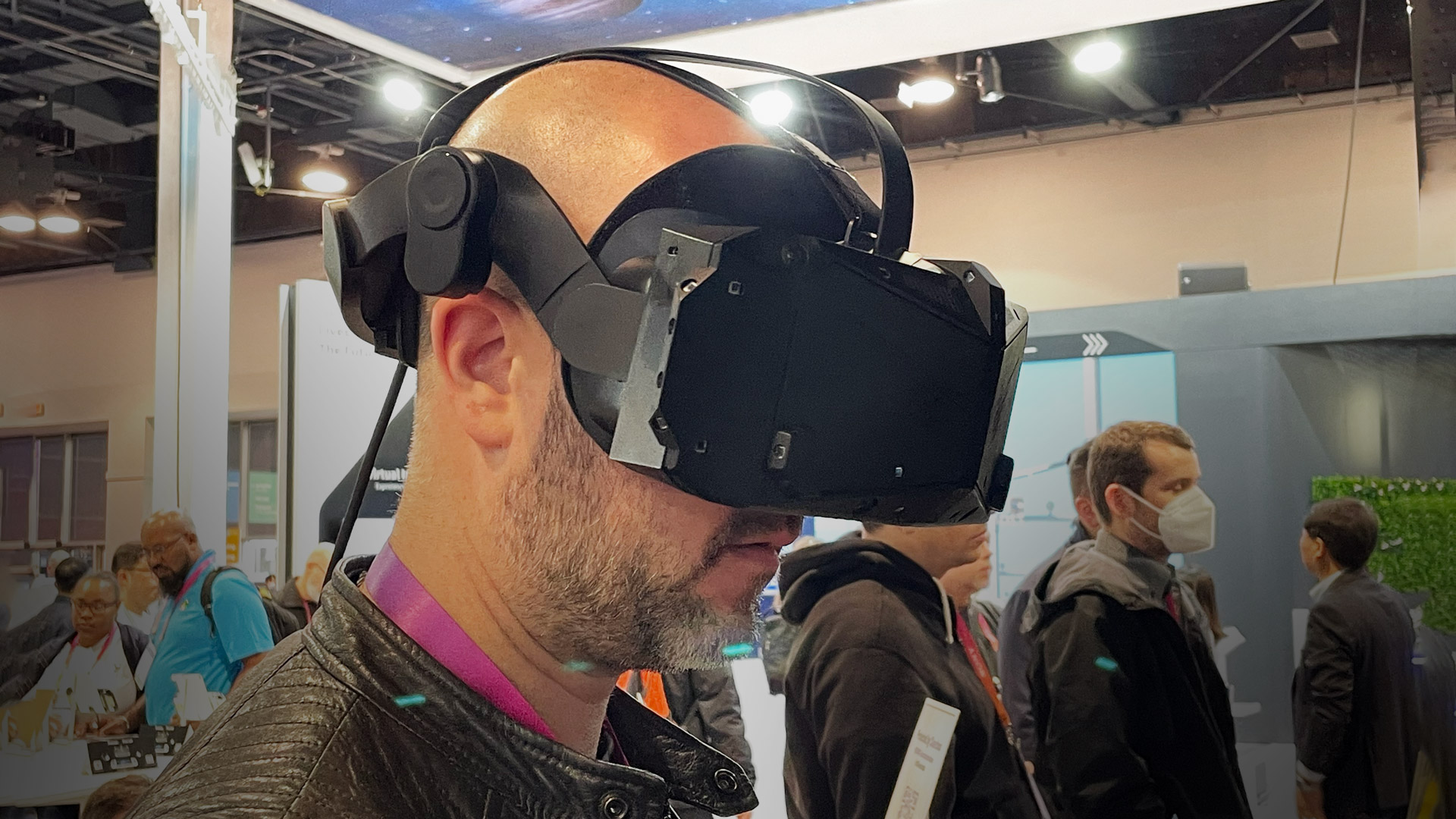At CES 2023 Pimax was showing off its latest high-resolution headset, the Pimax Crystal, which uses new lenses and new displays for what the company says is its clearest looking image yet. And while it’s definitely an improvement in many areas over the company’s headsets, there’s a key flaw that I hope the Pimax will be able to address.
Pimax Crystal employs new lenses and promises to be rid of glare and god rays that were apparent in prior Pimax headsets (and many others) which used Fresnel lenses. That, along with high-resolution displays, purported HDR capability, swappable lenses (to trade field-of-view for pixel density), and up to a 160Hz refresh rate. For a full breakdown of the headset’s spec, see our announcement article.
At CES 2023 I got to see the headset myself for the first time. Although the headset is technically capable of running in standalone mode, I saw it running as a PC VR headset with SteamVR Tracking.

Naturally, the demo I was shown was running Half-Life: Alyx—arguably VR’s best looking game—to show off the detail the headset can reproduce with its 2,880 × 2,880 (8.3MP) per-eye displays. From the quick hands-on I got with Pimax Crystal, I could see this was a big step up in clarity over the company’s prior headsets, especially with regards to edge-to-edge clarity. The visual basics were solid too in terms of pupil swim, geometric distortion, and chromatic aberration. There was a little mura visible on this headset but nothing egregious as far as I could tell.
But there was one thing that immediately stood out to my eyes which otherwise foils a good looking image: blur during head movement. While the static image seen through the headset looks quite sharp, as soon as you start moving your head to look around the world you’ll see a lot of blur—that’s a problem for VR considering that your head is very frequently in motion.

My best guess is this is being caused by persistence blur; a display artifact that’s mostly solved on other headsets and is thus rarely seen anymore. Persistence blurring is is caused by the display staying lit for too long, such that as you turn your head the pixels remain lit even while their position becomes inaccurate (because they are ‘frozen’ in place each frame, until the next frame comes along and updates the position to account for your head movement). Most headsets employ a form of ‘low-persistence’ which counteracts this issue by illuminating the display for only a fraction of the time between frames, such that as you move your head the pixels aren’t ‘frozen’ in place, but are actually unlit, leaving your brain to fill in the gaps without seeing the pixels blur between frames.
The amount of blur I saw through Pimax Crystal I would say notably compromises what is otherwise an impressively clean image, though there’s a chance that Pimax could fix this issue, depending upon exactly what’s causing it.
For one, it’s possible that the headsets being shown at CES 2023 were still not fully tuned and that low-persistence hasn’t been properly tuned (or maybe isn’t even enabled yet). In that case it might be a matter of final tweaks before they get the correct display behavior which could reduce persistence blur.
Another factor could be the headset’s ‘HDR’ capability. While I don’t believe Pimax has shared any information on peak brightness, it’s possible that the display can’t do both low-persistence and HDR brightness at the same time (indeed this is a challenge because HDR needs high brightness while low-persistence needs pixels to be illuminated only for a minimal amount of time).
Curiously, I also noticed what appeared to be persistence blurring on pre-release versions of PSVR 2… which also purports to have an HDR display. For both PSVR 2 and Pimax Crystal, I’m hoping we’ll see improvements by the time the finished headsets are headed to customers.
And still there’s other possibilities—this might not be persistence blur at all, but simply slow pixel switching time causing some form of ghosting, which could be an inherent limitation of the display or maybe something that could be tweaked.
– – — – –
Ultimately I’m pretty impressed with the clarity and wide field-of-view of the Pimax Crystal, but the blur I’ve seen during head movement compromises the image in my book. My gut says this is probably a persistence blurring issue, though it could be something else. We’ll have to wait to see what Pimax says about this and if they’re able to make improvements by the time Crystal ships.

Speaking about Crystal shipping; the headset was originally planned for release in Q3 of 2022, but that date has slipped. Although the company hosted a ‘Pimax Crystal Launch Event‘ back in November, at CES 2023 Pimax said the first headsets will start being delivered at the end of this month, though the company also indicates that it won’t reach full production capacity until the middle of the year. Even when the first units do start shipping, key accessories and features, like the headset’s standalone mode—which makes up about half of its value proposition—aren’t expected to be available until unspecified points in the future.
,
